
| Самолеты (сортировка по:) | |||||
| Страна | Конструктор | Название | Год | Фото | Текст |
Hansa-Brandenburg D.I/KD
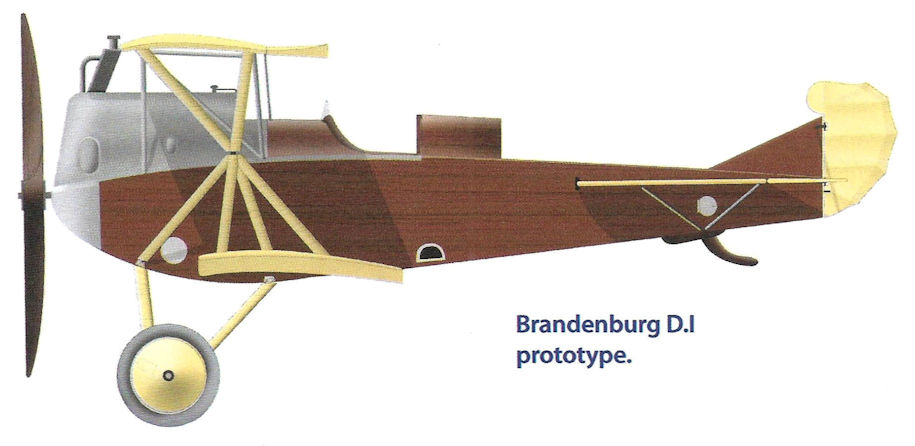
|
Страна: Германия Год: 1916
Истребитель |
| Hansa-Brandenburg - CC - 1916 - Германия | <– | –> | Hansa-Brandenburg - G.I - 1916 - Германия |
 |
C.Owers - Hansa-Brandenburg Aircraft of WWI. Volume 1 - Landplanes /Centennial Perspective/ (17) |
| Brandenburg D.I prototype |
 |
C.Owers - Hansa-Brandenburg Aircraft of WWI. Volume 1 - Landplanes /Centennial Perspective/ (17) |
| Brandenburg D.I 65.53 of Flik 41J. |
 |
J.Davilla - Italian Aviation in the First World War. Vol.1: Operations /Centennial Perspective/ (73) |
| Brandenburg D.I 65.53, Flik 41 |
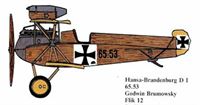 |
E.Hauke, W.Schroeder, B.Totschinger - Die Flugzeuge der k.u.k. Luftfahrtruppe und Seeflieger 1914-1918 |
| Hansa-Brandenburg D I 65.53 Godwin Brumowsky Flik 12 St. Veit Dezember 1916 |
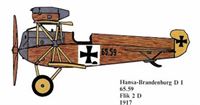 |
E.Hauke, W.Schroeder, B.Totschinger - Die Flugzeuge der k.u.k. Luftfahrtruppe und Seeflieger 1914-1918 |
| Hansa-Brandenburg D I 65.59 Flik 2 D 1917 |
 |
C.Owers - Hansa-Brandenburg Aircraft of WWI. Volume 1 - Landplanes /Centennial Perspective/ (17) |
| Brandenburg D.I 65.66 of Flek 6. |
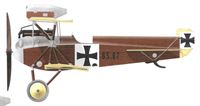 |
C.Owers - Hansa-Brandenburg Aircraft of WWI. Volume 1 - Landplanes /Centennial Perspective/ (17) |
| Brandenburg D.I 65.67 of Flik 23 as built. |
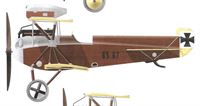 |
C.Owers - Hansa-Brandenburg Aircraft of WWI. Volume 1 - Landplanes /Centennial Perspective/ (17) |
| Brandenburg D.I 65.67 of Flik 23 after the fuselage insignia was scrapped off. |
 |
C.Owers - Hansa-Brandenburg Aircraft of WWI. Volume 1 - Landplanes /Centennial Perspective/ (17) |
| Brandenburg D.I 65.71 of Flek 6. |
 |
C.Owers - Hansa-Brandenburg Aircraft of WWI. Volume 1 - Landplanes /Centennial Perspective/ (17) |
| Brandenburg D.I 65.77 of Flek 6 with modified tail. |
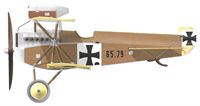 |
C.Owers - Hansa-Brandenburg Aircraft of WWI. Volume 1 - Landplanes /Centennial Perspective/ (17) |
| Brandenburg D.I 65.79 of Flik 35. |
 |
C.Owers - Hansa-Brandenburg Aircraft of WWI. Volume 1 - Landplanes /Centennial Perspective/ (17) |
| Brandenburg D.I 65.94 of Flek 6. |
 |
В.Обухович, А.Никифоров - Самолеты Первой Мировой войны |
| Ганза Бранденбург D I |
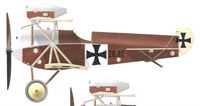 |
C.Owers - Hansa-Brandenburg Aircraft of WWI. Volume 1 - Landplanes /Centennial Perspective/ (17) |
| Phonix-built D.I 28.02 as built. |
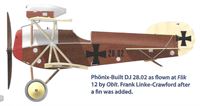 |
C.Owers - Hansa-Brandenburg Aircraft of WWI. Volume 1 - Landplanes /Centennial Perspective/ (17) |
| Phonix-built D.I 28.02 as flown at Flik 12 by Oblt. Frank Linke-Crawford after a fin was added. |
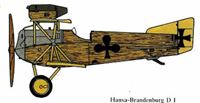 |
E.Hauke, W.Schroeder, B.Totschinger - Die Flugzeuge der k.u.k. Luftfahrtruppe und Seeflieger 1914-1918 |
| Hansa-Brandenburg D I 28.04 Flik 34 St. Veit |
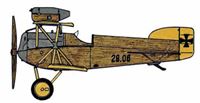 |
E.Hauke, W.Schroeder, B.Totschinger - Die Flugzeuge der k.u.k. Luftfahrtruppe und Seeflieger 1914-1918 |
| Hansa-Brandenburg D I 28.06 Julius Arigi Flik 101 G Isonzo-Front Frühjahr 1917 |
 |
P.Grosz, G.Haddow, P.Shiemer - Austro-Hungarian Army Aircraft of World War One /Flying Machines/ |
| Brandenburg D.I(Ph) 28.10, Flik 41/J |
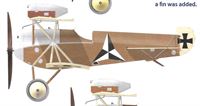 |
C.Owers - Hansa-Brandenburg Aircraft of WWI. Volume 1 - Landplanes /Centennial Perspective/ (17) |
| Phonix-Built D.I 28.10 flown at Flik 41J by Brumowski, Samek, Richter, Mayrbaurl, Pillwein, and others. |
 |
В.Кондратьев - Самолеты первой мировой войны |
| Ганза Бранденбург D-I, пилот - гауптман Г.Брумовский, май 1917г. |
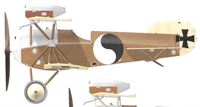 |
C.Owers - Hansa-Brandenburg Aircraft of WWI. Volume 1 - Landplanes /Centennial Perspective/ (17) |
| Phonix-Built D.I 28.11 flown at Flik 41J, written off in July 1917 by Feldwebel Karl Kaszala. |
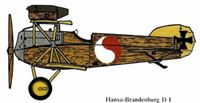 |
E.Hauke, W.Schroeder, B.Totschinger - Die Flugzeuge der k.u.k. Luftfahrtruppe und Seeflieger 1914-1918 |
| Hansa-Brandenburg D I 28.11 Karl Kaszala Flik 41 J Sesana |
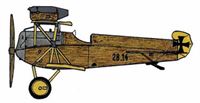 |
E.Hauke, W.Schroeder, B.Totschinger - Die Flugzeuge der k.u.k. Luftfahrtruppe und Seeflieger 1914-1918 |
| Hansa-Brandenburg D I 28.14 Kurt Gruber Flik 41 J Sesana Mai 1917 |
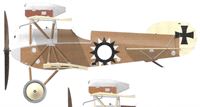 |
C.Owers - Hansa-Brandenburg Aircraft of WWI. Volume 1 - Landplanes /Centennial Perspective/ (17) |
| Phonix-Built D.I 28.15 as flown at Flik 41J by Oblt. Frank Linke-Crawford. |
 |
В.Кондратьев - Самолеты первой мировой войны |
| "Ганза-Бранденбург" D.I, на котором в 1917 году летал известный австрийский ас Фрэнк Линке-Кроуфорд. |
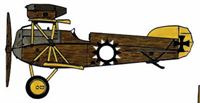 |
E.Hauke, W.Schroeder, B.Totschinger - Die Flugzeuge der k.u.k. Luftfahrtruppe und Seeflieger 1914-1918 |
| Hansa-Brandenburg D I 28.15 Frank Linke-Crawford Flik 41 J Sesana Herbst 1917 |
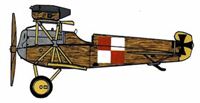 |
E.Hauke, W.Schroeder, B.Totschinger - Die Flugzeuge der k.u.k. Luftfahrtruppe und Seeflieger 1914-1918 |
| Hansa-Brandenburg D I 28.17 Marvan Gawel Flik 41 J Sesana |
 |
C.Owers - Hansa-Brandenburg Aircraft of WWI. Volume 3 - Monoplane Seaplanes /Centennial Perspective/ (19) |
| Phonix-Built Brandenburg D.I 28.26 of Flik 16 featured an unusual gun mount. Unlike the usual VK gun canister, the rear of the gun could be lowered in flight, enabling the pilot to clear jams. |
 |
J.Davilla - Italian Aviation in the First World War. Vol.1: Operations /Centennial Perspective/ (73) |
| Brandenburg D.I 28.30 Hptm. Raoul Stojsavljevic OC, Flik 16. Single-seat reconnaissance fighter |
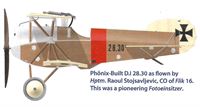 |
C.Owers - Hansa-Brandenburg Aircraft of WWI. Volume 1 - Landplanes /Centennial Perspective/ (17) |
| Phonix-Built D.I 28.30 as flown by Hptm. Raoul Stojsavljevic, CO of Flik 16. This was a pioneering Fotoeinsitzer. |
 |
E.Hauke, W.Schroeder, B.Totschinger - Die Flugzeuge der k.u.k. Luftfahrtruppe und Seeflieger 1914-1918 |
| Hansa-Brandenburg D I 28.30 Photoaufklärer Raoul Stojsavljevic Flik 16 Villach August 1917 |
 |
E.Hauke, W.Schroeder, B.Totschinger - Die Flugzeuge der k.u.k. Luftfahrtruppe und Seeflieger 1914-1918 |
| Brandenburg KD |
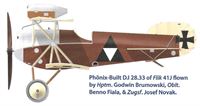 |
C.Owers - Hansa-Brandenburg Aircraft of WWI. Volume 1 - Landplanes /Centennial Perspective/ (17) |
| Phonix-Built D.I 28.33 of Flik 41J flown by Hptm. Godwin Brumowski, Oblt. Benno Fiala, & Zugsf. Josef Novak. |
 |
E.Hauke, W.Schroeder, B.Totschinger - Die Flugzeuge der k.u.k. Luftfahrtruppe und Seeflieger 1914-1918 |
| Hansa-Brandenburg D I 28.33 Leo Bisce Flik 41 J Sesana |
 |
E.Hauke, W.Schroeder, B.Totschinger - Die Flugzeuge der k.u.k. Luftfahrtruppe und Seeflieger 1914-1918 |
| Hansa-Brandenburg D I 28.37 Josef Kiss Flik 24 Pergine Sommer 1917 |
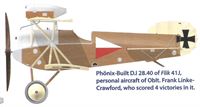 |
C.Owers - Hansa-Brandenburg Aircraft of WWI. Volume 1 - Landplanes /Centennial Perspective/ (17) |
| Phonix-Built D.I 28.40 of Flik 41J, personal aircraft of Oblt. Frank Linke-Crawford, who scored 4 victories in it. |
 |
E.Hauke, W.Schroeder, B.Totschinger - Die Flugzeuge der k.u.k. Luftfahrtruppe und Seeflieger 1914-1918 |
| Hansa-Brandenburg D I 28.44 Altmann Herzog Flik 41 J Sesana |
 |
E.Hauke, W.Schroeder, B.Totschinger - Die Flugzeuge der k.u.k. Luftfahrtruppe und Seeflieger 1914-1918 |
| Hansa-Brandenburg D I 28.58 Josef Siegel Flik 16 Villach |
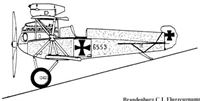 |
E.Hauke, W.Schroeder, B.Totschinger - Die Flugzeuge der k.u.k. Luftfahrtruppe und Seeflieger 1914-1918 |
| Brandenburg KD |
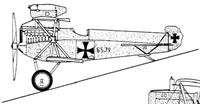 |
E.Hauke, W.Schroeder, B.Totschinger - Die Flugzeuge der k.u.k. Luftfahrtruppe und Seeflieger 1914-1918 |
| Brandenburg KD |
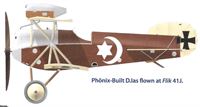 |
C.Owers - Hansa-Brandenburg Aircraft of WWI. Volume 1 - Landplanes /Centennial Perspective/ (17) |
| Phonix-Built D.I as flown at Flik 41J. |
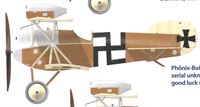 |
C.Owers - Hansa-Brandenburg Aircraft of WWI. Volume 1 - Landplanes /Centennial Perspective/ (17) |
| Phonix-Built D.I of Flik 41J, serial unknown, with Nordic good luck symbol. |
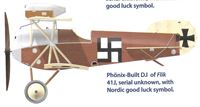 |
C.Owers - Hansa-Brandenburg Aircraft of WWI. Volume 1 - Landplanes /Centennial Perspective/ (17) |
| Phonix-Built D.I of Flik 41J, serial unknown, with Nordic good luck symbol. |
 |
C.Owers - Hansa-Brandenburg Aircraft of WWI. Volume 3 - Monoplane Seaplanes /Centennial Perspective/ (19) |
| The Brandenburg D.I prototype with original headrest and tail with radiator obscuring the pilot's view forward. The first Brandenburg KD prototype, powered by a 160 hp Mercedes engine, made its appearance in early 1916. The extreme aileron washout was unusual. |
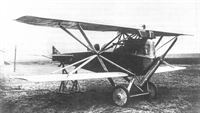 |
C.Owers - Hansa-Brandenburg Aircraft of WWI. Volume 1 - Landplanes /Centennial Perspective/ (17) |
| The prototype KD was an ugly aircraft with a distinctive humped headrest behind the cockpit until the fuselage top decking was extended to the tail post. |
 |
H.Cowin - Aviation Pioneers /Osprey/ |
| The Hansa-Brandenburg KD, with its novel interplane strut layout earned the instant sobriquet of 'Star Strutter'. Completed at the start of 1916, the KD was Ernst Heinkel's first single seat fighter design. Small and rugged, the KD was soon selected by the Austrians to serve as their standard fighter. The D I, to give its Austrian designation, was built locally by Phonix and Ufag. Powered initially by a 160hp Austro-Daimler, later Ufag machines had a 185hp Austro-Daimler, giving the compact fighter an enviable top level speed of 116mph, along with an excellent initial rate of climb in excess of 1,100 feet per minute. One of the D I weaknesses centred on it single 8mm Schwarzlose machine gun's lack of reliability, the gun being mounted above the upper wing centre-section to fire clear of the propeller arc and, thus not reduce its rate of fire. Besides siring the D I, the KD went on to be bought by the German navy as the KDW floatplane fighter. In this guise, the machine carried additional outboard 'V wing struts. Deliveries of the approximately 200 D Is built began in the autumn of 1916 through early 1917, while deliveries of the 58 naval KDWs stretched from September 1916 to February 19l8. The prototype, shown here in its initial form, has a fin that differs from those of production aircraft. |
 |
C.Owers - Hansa-Brandenburg Aircraft of WWI. Volume 1 - Landplanes /Centennial Perspective/ (17) |
| The Brandenburg 60.55 at Aspern in October 1917 when experiments were conducted with a rear pyramid strut removed, the purpose of which is unknown. The second prototype of the D.I, 60.55, had the fuselage top decking extended to the rudder and refined engine cowling. The finish is unusual in that the top of the rear fuselage decking is painted the same grey color as the engine panels. It has the original tail surfaces and the lower inner star strut is missing. It is unarmed at this time. (via AHT AL1157-054) |
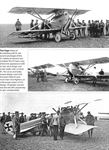 |
C.Owers - Hansa-Brandenburg Aircraft of WWI. Volume 3 - Monoplane Seaplanes /Centennial Perspective/ (19) |
| Then as today, a new aircraft caused much curiosity. Shown here is the arrival of the 60.55 prototype fighter at Flik 26 airfield in July-August 1916. Armament was not installed at the time. Views of Brandenburg 60.55, the second prototype of the D.I, before armament was installed. The D.I had a very distinctive appearance with its 'star' strut design and small rudder with no fixed fin. The struts and bulky engine design restricted the pilot's field of view more than most fighters, an unfortunate aspect of the design. Of greater concern was the aircraft's propensity to spin unexpectedly. |
 |
E.Hauke, W.Schroeder, B.Totschinger - Die Flugzeuge der k.u.k. Luftfahrtruppe und Seeflieger 1914-1918 |
| Brandenburg KD. Prototyp 60.55. Flugfeld Aspern (ex 05.09) The 2nd prototype, 60.55, was unarmed when this photograph was taken at Aspern airfield. |
 |
C.Owers - Hansa-Brandenburg Aircraft of WWI. Volume 3 - Monoplane Seaplanes /Centennial Perspective/ (19) |
| View of Brandenburg 60.55, the second prototype of the D.I. The workmanship and finish were excellent and the aircraft was strong and fast. Armament has not yet been installed. The second KD prototype 60.55 (ex 05.09) shows drag-reducing refinements such as an airfoil radiator, a raised and rounded rear fuselage, a refined engine cowling, and tapered strut ends. |
 |
W.Green, G.Swanborough - The Complete Book of Fighters |
| The KD "star strutter" without the overwing gun fairing. |
 |
В.Кондратьев - Самолеты первой мировой войны |
| "Ганза Бранденбург KD" |
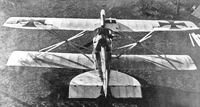 |
C.Owers - Hansa-Brandenburg Aircraft of WWI. Volume 3 - Monoplane Seaplanes /Centennial Perspective/ (19) |
| Interesting view of a Brandenburg D.I series 65.5x fighter. |
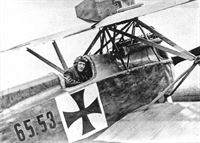 |
C.Owers - Hansa-Brandenburg Aircraft of WWI. Volume 1 - Landplanes /Centennial Perspective/ (17) |
| The Hansa-Brandenburg D.I 65.53 is seen here with future Austro-Hungarian Ace of Aces Hauptmann Godwin Brumowski in the cockpit. The type was tricky to fly and there were many accidents in the type. Brumowski, in this photo, taken while he served at Flik 12, flew the more powerful Phonix-built 28 series well into the late Summer of 1917. |
 |
C.Owers - Hansa-Brandenburg Aircraft of WWI. Volume 1 - Landplanes /Centennial Perspective/ (17) |
| Brandenburg C.I 23.56 and Brandenburg D.I 65.53 on a front-line airfield prepare for a sortie. The D.I was used as an escort fighter for the slower reconnaissance aircraft. The rudder cross on the D.I is marked on a white panel. |
 |
P.Grosz, G.Haddow, P.Shiemer - Austro-Hungarian Army Aircraft of World War One /Flying Machines/ |
| Photographed shortly after arrival at Flik 12, the new Brandenburg D.I 65.53 awaits installation of the Type II VK gun canister. It was one of the fighters Brumowski flew in Flik 41/J. Hauptmann Godwin Brumowski scored a victory in this aircraft on 3 December 1916. Only a total of three victories were recorded for the Brandenburg-built D.I fighters. |
 |
P.Grosz, G.Haddow, P.Shiemer - Austro-Hungarian Army Aircraft of World War One /Flying Machines/ |
| Brandenburg D.I 65.54 during acceptance testing at Briest in late 1916. Armament was installed on arrival in Aspern. Because of the unique pyramid struts, the D.I was dubbed “star-strutter” in the post-war press. |
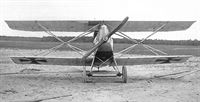 |
C.Owers - Hansa-Brandenburg Aircraft of WWI. Volume 3 - Monoplane Seaplanes /Centennial Perspective/ (19) |
| This front view of Brandenburg D.l 65.54 emphasizes the care taken to streamline the fighter. |
 |
C.Owers - Hansa-Brandenburg Aircraft of WWI. Volume 1 - Landplanes /Centennial Perspective/ (17) |
| D.I 65.54 with aerodynamic fairing cones at the intersection of the interplane struts. |
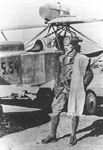 |
C.Owers - Hansa-Brandenburg Aircraft of WWI. Volume 1 - Landplanes /Centennial Perspective/ (17) |
| Linke-Crawford posing with 65.54. Sent to Flik 12 in November 1916 without an airscrew, it was not until January that it could be test flown. It was damaged during the test flight and shipped for repair. |
 |
C.Owers - Hansa-Brandenburg Aircraft of WWI. Volume 3 - Monoplane Seaplanes /Centennial Perspective/ (19) |
| Brandenburg D.I 65.56 at right and 65.74 at left. |
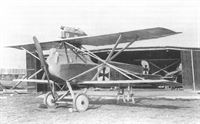 |
C.Owers - Hansa-Brandenburg Aircraft of WWI. Volume 1 - Landplanes /Centennial Perspective/ (17) |
| Brandenburg-built 65.59 displays the "Baby Coffin" gun enclosure on the top wing, fully enclosed engine and the "star" interplane strut arrangement. This machine was probably photographed while at Flik 19 as it was shipped on 2 November 1916, and was still there in February 1917. It is in plain finish with varnished ply fuselage, grey metal panels and clear doped fabric surfaces. |
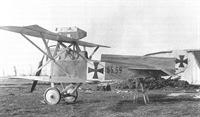 |
C.Owers - Hansa-Brandenburg Aircraft of WWI. Volume 1 - Landplanes /Centennial Perspective/ (17) |
| "Ханза-Бранденбург" серии 65. Brandenburg D.I 65.59 served with Flik 19 in January 1917. The Type II VK canister carries a single Spandau 08/15 machine gun. At a later date, this machine was armed with two Spandau guns. Note the "Lift Here" stencils under the horizontal tailplane. |
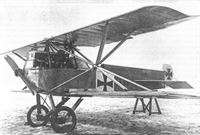 |
C.Owers - Hansa-Brandenburg Aircraft of WWI. Volume 1 - Landplanes /Centennial Perspective/ (17) |
| On display in the snow, 65.60 shows where the removable engine panels fitted on the port side. This machine was used as a fighter trainer at Fluggeschwader I in Strasshof from 1 December 1916, to the end of the following January, then to Flek 6. |
 |
C.Owers - Hansa-Brandenburg Aircraft of WWI. Volume 3 - Monoplane Seaplanes /Centennial Perspective/ (19) |
| Brandenburg D.I 65.60 without armament; the serial number was stenciled on parts of the engine cowling. The Brandenburg D.I 65.60 trainer, based at Flek 4 in Szombathely, was still on charge in October 1918. The large exhaust manifold was characteristic of the 160 hp Daimler version. The crossed-wire bracing underneath the wing radiator was a field modification. |
 |
C.Owers - Hansa-Brandenburg Aircraft of WWI. Volume 1 - Landplanes /Centennial Perspective/ (17) |
| Brandenburg D.I 65.60 showing details of this distinctive aircraft. The first biplane fighter available to the Austro-Hungarian Luftfahrtruppe, the D.I was fast and robust but had tricky handling characteristics. |
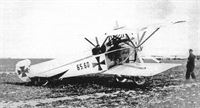 |
C.Owers - Hansa-Brandenburg Aircraft of WWI. Volume 3 - Monoplane Seaplanes /Centennial Perspective/ (19) |
| Brandenburg D.I 65.60 carries no armament. |
 |
P.Grosz, G.Haddow, P.Shiemer - Austro-Hungarian Army Aircraft of World War One /Flying Machines/ |
| A non-commissioned pilot and mechanics of Flik 23 posing in front of Brandenburg D.I 65.63 on the Prosecco airfield in 1917. The cut-back engine cowling provides greater cooling in summer months. |
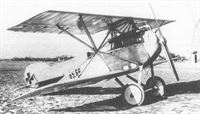 |
C.Owers - Hansa-Brandenburg Aircraft of WWI. Volume 1 - Landplanes /Centennial Perspective/ (17) |
| The unarmed Brandenburg D.I 65.66 fighter-trainer photographed with a modified tail fin and rudder. To maximize the forward view from the deep cockpit, the cowling was closely fitted to the engine. D.I 65.66 with late tail and airfoil radiator. It is not known if this machine served at the front, but it was with Flep 1 in January 1917. It ended up as a trainer with Flek 6, which may account for its lack of armament. |
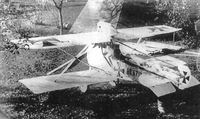 |
C.Owers - Hansa-Brandenburg Aircraft of WWI. Volume 3 - Monoplane Seaplanes /Centennial Perspective/ (19) |
| Brandenburg D.I 65.67 assigned to Flik 23. |
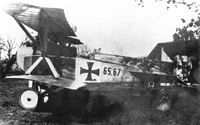 |
C.Owers - Hansa-Brandenburg Aircraft of WWI. Volume 3 - Monoplane Seaplanes /Centennial Perspective/ (19) |
| Another view of Brandenburg D.I 65.67 assigned to Flik 23. |
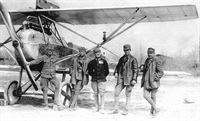 |
C.Owers - Hansa-Brandenburg Aircraft of WWI. Volume 3 - Monoplane Seaplanes /Centennial Perspective/ (19) |
| NCO pilots of Flik 23 with Brandenburg D.I 65.67 on Prosecco airfield in the Summer of 1917. |
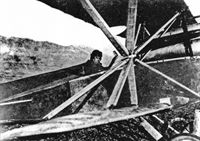 |
C.Owers - Hansa-Brandenburg Aircraft of WWI. Volume 3 - Monoplane Seaplanes /Centennial Perspective/ (19) |
| "Ганза Бранденбург" D-I серии 65 с двигателем "Австро-Даймлер" Hptm. Raoul Stojsavljevic in D.I 28.68 (65.68 ??? )of Flik 34 in February 1917. Known as "The Iron Stoj", he became an ace in this aircraft and finally achieved 10 confirmed victories. The fuselage of this aircraft is in the Prague Technical Museum. |
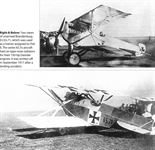 |
C.Owers - Hansa-Brandenburg Aircraft of WWI. Volume 3 - Monoplane Seaplanes /Centennial Perspective/ (19) |
| Two views of unarmed Brandenburg D.I 65.71, which was used as a trainer assigned to Flek 6. The series 65.7x aircraft had car-type nose radiators for their 150-hp Daimler engines. It was written off in September 1917 after a landing accident. |
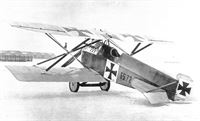 |
C.Owers - Hansa-Brandenburg Aircraft of WWI. Volume 3 - Monoplane Seaplanes /Centennial Perspective/ (19) |
| Brandenburg D.I 65.72, accepted on 24 November 1916, shown here during acceptance trials. Unlike the first series, the strut attachment points have been fitted with streamlined covers. Armament remains to be installed. Unarmed Brandenburg D.I 65.72; accepted on November 20, 1916, it was used as a fighter trainer with Flek 6 and was written off on May 10, 1917 after a take-off accident. The prominent nose radiator gave the 65.7x series a distinctive, pugnacious look. |
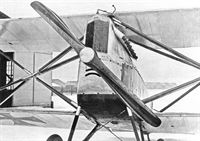 |
C.Owers - Hansa-Brandenburg Aircraft of WWI. Volume 3 - Monoplane Seaplanes /Centennial Perspective/ (19) |
| The second production batch of the Brandenburg D.I (here 65.72) was powered by a 150 hp Daimler engine and fitted with an auto radiator. The exhaust stacks were on the left side. Unarmed Brandenburg D.I 65.72; accepted on November 20, 1916, it was used as a fighter trainer with Flek 6 and was written off on May 10, 1917 after a take-off accident. The prominent nose radiator gave the 65.7x series a distinctive, pugnacious look. |
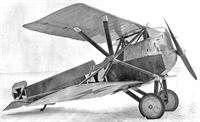 |
C.Owers - Hansa-Brandenburg Aircraft of WWI. Volume 3 - Monoplane Seaplanes /Centennial Perspective/ (19) |
| Unarmed Brandenburg D.I 65.72; accepted on November 20, 1916, it was used as a fighter trainer with Flek 6 and was written off on May 10, 1917 after a take-off accident. The prominent nose radiator gave the 65.7x series a distinctive, pugnacious look. This series used a nose radiator to cool its 150-hp Austro-Daimler engine. Note the rudder cross is on a white field on the clear doped rudder. |
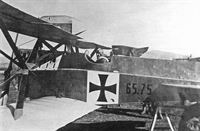 |
C.Owers - Hansa-Brandenburg Aircraft of WWI. Volume 3 - Monoplane Seaplanes /Centennial Perspective/ (19) |
| D.I 65.75 was assigned to Flik 23 accepted on January 16, 1917. On February 16, 1918 it crashed from an altitude of 3,000 meters near Prosecco airfield; fortunately, pilot Ltn.d.Res. Mirko Vrbancic was not injured. |
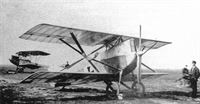 |
C.Owers - Hansa-Brandenburg Aircraft of WWI. Volume 3 - Monoplane Seaplanes /Centennial Perspective/ (19) |
| Unarmed Brandenburg D.I 65.77 was used as a fighter trainer with Flek 6 and was written off in 1917 after a landing accident. This aircraft featured modified tail surfaces intended to improve handling qualities. |
 |
C.Owers - Hansa-Brandenburg Aircraft of WWI. Volume 3 - Monoplane Seaplanes /Centennial Perspective/ (19) |
| The unarmed Brandenburg D.I 65.77 fitted with a rudimentary tail fin to improve flight characteristics. In this series, the pilot's position was raised and the center-section simplified to improve the forward view. |
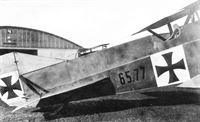 |
C.Owers - Hansa-Brandenburg Aircraft of WWI. Volume 3 - Monoplane Seaplanes /Centennial Perspective/ (19) |
 |
P.Grosz, G.Haddow, P.Shiemer - Austro-Hungarian Army Aircraft of World War One /Flying Machines/ |
| Zugsfuhrer Karl Seiler of Flik 35 (and mascot) in his Brandenburg D.I 65.79 at St. Veit (near Wippach) in 1917. Compare the improved pilot’s view with that of the pilot in D.I 65.54. D.I 65.79 on a mountain airfield. Note the squadron dog on the horizontal tailplane. This machine served with Fliks 35 and 23 before being withdrawn from the front and used as a trainer for wireless instruction. This photograph gives a good idea of the type of terrain that was confronted on the Italian Front. |
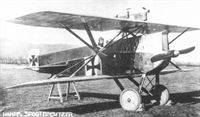 |
C.Owers - Hansa-Brandenburg Aircraft of WWI. Volume 1 - Landplanes /Centennial Perspective/ (17) |
| Zugsfuhrer Karl Seiler of Flik 35 in his Hansa-Brandenburg D.I 65.79. The D.I was the first fighter produced in the Austro-Hungarian Empire; it was strong and fast but had very poor handling characteristics. Lack of a synchronizer meant the machine gun was mounted over the wing in a streamlined 'baby coffin'. The D.I scored its first victory December 3, 1916 when Caproni Ca.2 #1223 was brought down by KD 65.67. (Aeronaut) D.I 65.70, like all aircraft of the batch 65.70 - 65.99, had a frontal radiator for its 150-hp Austro-Daimler motor. Delivered at the end of 1916, it served as a trainer with Flek 6 and 19. |
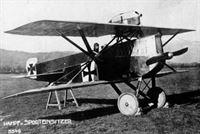 |
E.Hauke, W.Schroeder, B.Totschinger - Die Flugzeuge der k.u.k. Luftfahrtruppe und Seeflieger 1914-1918 |
| Brandenburg KD, Flugzeugnummer 65.79, Fliegerkompanie 35, Feldpilot Fw Karl Sailer |
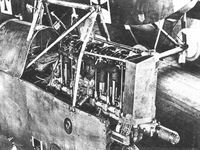 |
C.Owers - Hansa-Brandenburg Aircraft of WWI. Volume 1 - Landplanes /Centennial Perspective/ (17) |
| Engine installation of a Series 65.7 Brandenburg D.I. |
 |
C.Owers - Hansa-Brandenburg Aircraft of WWI. Volume 1 - Landplanes /Centennial Perspective/ (17) |
| D.I 65.94 with frontal radiator. These late machines were powered by the 150-hp Austro-Daimler engine. The inboard position of the upper wing crosses may be discerned through the clear doped wings. This aircraft was delivered as a fighter trainer to Flek 6 in 1917, being written off in a landing accident in September that year. |
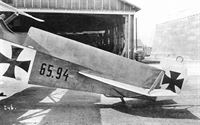 |
C.Owers - Hansa-Brandenburg Aircraft of WWI. Volume 3 - Monoplane Seaplanes /Centennial Perspective/ (19) |
| Brandenburg D.I 65.94 serving as a fighter trainer with Flek 6. |
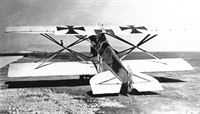 |
C.Owers - Hansa-Brandenburg Aircraft of WWI. Volume 3 - Monoplane Seaplanes /Centennial Perspective/ (19) |
| Unarmed D.I 65.94 also served as a fighter trainer with Flek 6. |
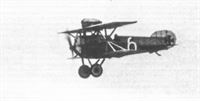 |
C.Owers - Hansa-Brandenburg Aircraft of WWI. Volume 1 - Landplanes /Centennial Perspective/ (17) |
| Brandenburg D.I of Flik 16 with large shadow-shaded "6" on the fuselage. |
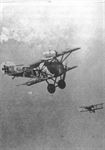 |
C.Owers - Hansa-Brandenburg Aircraft of WWI. Volume 1 - Landplanes /Centennial Perspective/ (17) |
| Brandenburg D.I escorts a two-seat reconnaissance biplane. |
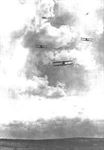 |
C.Owers - Hansa-Brandenburg Aircraft of WWI. Volume 3 - Monoplane Seaplanes /Centennial Perspective/ (19) |
| Three Brandenburg C.I aircraft and two D.I fighters of Fluggeschwader 1 return to land at Divacca airfield after a mission. |
 |
C.Owers - Hansa-Brandenburg Aircraft of WWI. Volume 3 - Monoplane Seaplanes /Centennial Perspective/ (19) |
| C.I 69.53 in a unit lineup with other C.I and D.I Brandenburgs. |
 |
P.Grosz, G.Haddow, P.Shiemer - Austro-Hungarian Army Aircraft of World War One /Flying Machines/ |
| A medley of aircraft flown by Flik 23/D at Divacca on the Isonzo Front in mid-1917, headed by a Brandenburg C.I(U) 69.57, followed by a Brandenburg C.I(U) 129.46, an Aviatik C.I series 37, and four Brandenburg C.I biplanes flanking a Brandenburg D.I fighter. |
 |
K.Delve - World War One in the Air /Crowood/ |
| Isonzo Front with two Aviatik DIs and two KD fighters at Divacca. |
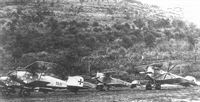 |
C.Owers - Hansa-Brandenburg Aircraft of WWI. Volume 1 - Landplanes /Centennial Perspective/ (17) |
| The Oeffag-built Albatros D.III was the preferred fighter of the kuk. Here Albatros fighters are lined up in front of Aviatik Berg D.I fighters (C.I ???) and a lone Brandenburg D.I. The steep terrain was typical of that flown in the Italian front. |
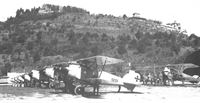 |
P.Grosz, G.Haddow, P.Shiemer - Austro-Hungarian Army Aircraft of World War One /Flying Machines/ |
| Eight Albatros D.lIl(Oef) fighters of Jagdstaffel Oberleutnant Elssler parading on the Pergine airfield awaiting Kaiser Karl's inspection on 14 September 1917. A Brandenburg D.I(Ph) series 28 fighter and two Aviatik C.I series 37 biplanes are in the second row. Villa Guila della Rosa is in the far right. |
 |
C.Owers - Hansa-Brandenburg Aircraft of WWI. Volume 1 - Landplanes /Centennial Perspective/ (17) |
| In the Summer of 1917, a Brandenburg D.I and two C.I aircraft of Flik 16 rest on Seebach airfield. |
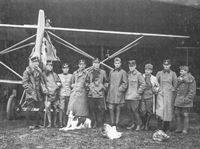 |
C.Owers - Hansa-Brandenburg Aircraft of WWI. Volume 1 - Landplanes /Centennial Perspective/ (17) |
| This photograph was sent as a card to Ltn. Rader. Members of the unit pose with a Brandenburg D.I in the background. Note the anemometer speed indicator on the port interplane strut and the obligatory squadron dog. (AHT AL0860-009b) |
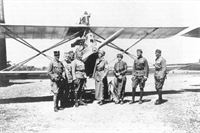 |
C.Owers - Hansa-Brandenburg Aircraft of WWI. Volume 3 - Monoplane Seaplanes /Centennial Perspective/ (19) |
| From Right, Hptm. Brumowski, Oblt. Benno Fiala Ritter von Fernbrugg, and the Archduchess Maria Theresa during her visit to Flik 41/J, July 26, 1917 at Sesana. Unfortunately, the other woman, apparently a nurse, is not known, nor are the identifies of the four men at left known. |
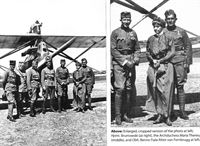 |
C.Owers - Hansa-Brandenburg Aircraft of WWI. Volume 3 - Monoplane Seaplanes /Centennial Perspective/ (19) |
| Left: Hptm. Brumowski (at right), the Archduchess Maria Theresa (middle), and Oblt. Benno Fiala Ritter von Fernbrugg at her left during her visit to Flik 41/J, July 26, 1917 at Sesana. Right: Enlarged, cropped version of the photo at left; Hptm. Brumowski (at right), the Archduchess Maria Theresa (middle), and Oblt. Benno Fiala Ritter von Fernbrugg at left. |
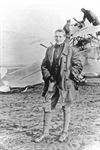 |
C.Owers - Hansa-Brandenburg Aircraft of WWI. Volume 3 - Monoplane Seaplanes /Centennial Perspective/ (19) |
| Godwin Brumowski in front of one of the Brandenburg D.I fighters he flew in Flik 41/J. |
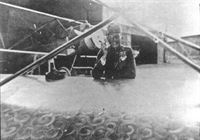 |
C.Owers - Hansa-Brandenburg Aircraft of WWI. Volume 1 - Landplanes /Centennial Perspective/ (17) |
| Godwin Brumowski with monocle leans on the wing of one of his Brandenburg D.I fighters. Unusually, the upper surface of the wing has been hand-painted with swirls of light-colored paint over relatively dark fabric. |
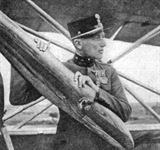 |
C.Owers - Hansa-Brandenburg Aircraft of WWI. Volume 3 - Monoplane Seaplanes /Centennial Perspective/ (19) |
| Godwin Brumowski, the leading Austro-Hungarian ace with 35 victories, photographed with one of the Brandenburg D.I fighters he flew in Flik 41/J. |
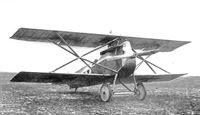 |
C.Owers - Hansa-Brandenburg Aircraft of WWI. Volume 3 - Monoplane Seaplanes /Centennial Perspective/ (19) |
| The Brandenburg D.I 28.01 was the first production Phonix-built D.I. Here is has not yet received its armament. |
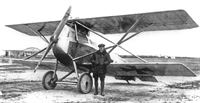 |
C.Owers - Hansa-Brandenburg Aircraft of WWI. Volume 3 - Monoplane Seaplanes /Centennial Perspective/ (19) |
| Brandenburg D.I 28.01, the first production Phonix-built D.I, before being armed. |
 |
P.Grosz, G.Haddow, P.Shiemer - Austro-Hungarian Army Aircraft of World War One /Flying Machines/ |
| The unarmed Brandenburg D.I(Ph) 28.01 fighter during flight testing at Aspern in January 1917. The center section has been simplified and the strut attachment points are covered with cuffs. On 1 March 1917, Hauptmann Franz Rabitsch, commander of Fluggeschwader I, lost his life when this aircraft crashed on a familiarization flight. |
 |
C.Owers - Hansa-Brandenburg Aircraft of WWI. Volume 3 - Monoplane Seaplanes /Centennial Perspective/ (19) |
| The end of D.I 28.01; the D.I was more susceptible to spins and crashes than most production fighters of the time. |
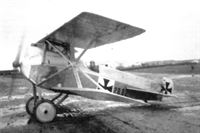 |
C.Owers - Hansa-Brandenburg Aircraft of WWI. Volume 3 - Monoplane Seaplanes /Centennial Perspective/ (19) |
| D.I 28.02, the second Phonix-built aircraft, with initial rudder without fixed fin. |
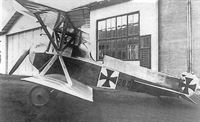 |
C.Owers - Hansa-Brandenburg Aircraft of WWI. Volume 3 - Monoplane Seaplanes /Centennial Perspective/ (19) |
| More views of D.I 28.02, the second Phonix-built aircraft, with initial rudder without fixed fin. The keel surface of the extended headrest was intended to provide sufficient stability with minimum drag, but proved inadequate and a number of experiments were carried out with enlarged vertical fins. |
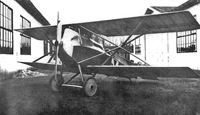 |
C.Owers - Hansa-Brandenburg Aircraft of WWI. Volume 3 - Monoplane Seaplanes /Centennial Perspective/ (19) |
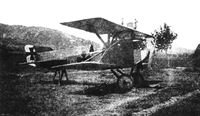 |
C.Owers - Hansa-Brandenburg Aircraft of WWI. Volume 3 - Monoplane Seaplanes /Centennial Perspective/ (19) |
| D.I 28.04 showing an individual marking and its modified find and rudder. |
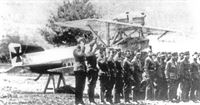 |
C.Owers - Hansa-Brandenburg Aircraft of WWI. Volume 3 - Monoplane Seaplanes /Centennial Perspective/ (19) |
| Perhaps D.I 28.04, this aircraft has a different rudder and fin shape in search of improved handling. |
 |
P.Grosz, G.Haddow, P.Shiemer - Austro-Hungarian Army Aircraft of World War One /Flying Machines/ |
| Offizierstellvertreter Julius Arigi of Fluggeschwader I flying the Brandenburg D.I(Ph) 28.06 fitted with the fin and rudder that he designed and that was later adopted as standard equipment. Arigi achieved two victories in this machine on 24 April and 3 May 1917. Brandenburg D.I, Type KD, 28.06, Fluggeschwader I, Feldpilot Offzstv Julius Arigi erzielte mit diesem Flugzeug drei Luftsiege Brandenburg D.I, Type KD, 28.06, Fluggeschwader I, Feldpilot Offzstv Julius Arigi одержал на этом самолете три воздушные победы. |
 |
C.Owers - Hansa-Brandenburg Aircraft of WWI. Volume 3 - Monoplane Seaplanes /Centennial Perspective/ (19) |
| D.I 28.06 in flight over the typically-rugged terrain. |
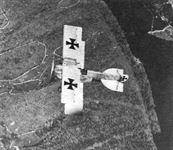 |
C.Owers - Hansa-Brandenburg Aircraft of WWI. Volume 3 - Monoplane Seaplanes /Centennial Perspective/ (19) |
| D.I 28.06 being flown by Julius Arigi over the Isonzo Front, spring 1917, with attached to Fluggeschwader 1. The vertical black line in front of the serial number is a unit marking for Fluggeschwader 1. The dark lower wing tip is due to the shadow of the aircraft taking the photo. With a final total of 32 confirmed victories, Offizierstellvertreter Arigi was the second leading Austro-Hungarian fighter ace. |
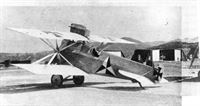 |
E.Hauke, W.Schroeder, B.Totschinger - Die Flugzeuge der k.u.k. Luftfahrtruppe und Seeflieger 1914-1918 |
| This star bedecked, Phonix-built Brandenburg D.I was 28.10. Allocated to Flik 41J on 24 February 1917 while the unit was forming up at Strasshof, it was at the Front in April. Flown by Godwin Brumowski as his first fighter, it was also flown by Samek and Richter amongst others. It was later given the modified fin and rudder. Note the Phonix decal on the rudder, (via AHT AL0579-042) |
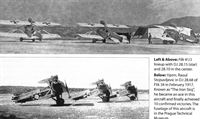 |
C.Owers - Hansa-Brandenburg Aircraft of WWI. Volume 3 - Monoplane Seaplanes /Centennial Perspective/ (19) |
| Flik 41/J lineup with D.I 28.15 (star) and 28.10 in the center. |
 |
P.Grosz, G.Haddow, P.Shiemer - Austro-Hungarian Army Aircraft of World War One /Flying Machines/ |
| "Ханза-Бранденбург" серии 28. Brandenburg D.I(Ph) 28.24 was flown by Oberleutnant Karl Urban of Flik 16/D, shown here on 14 August 1917 fitted with the rounded fin and rudder. Oblt. Urban in Brandenburg D.I 28.24 of Flik 16 with two red bands around the fuselage each side of the cross location. The fuselage cross has been scrapped off. Hptm. Stojsavljevic was wounded and shot down in this machine on 12 January 1918. Another source states that 28.24 was written off after an emergency landing caused by a carburettor fire in the air in the Spring of 1917. |
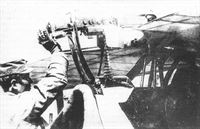 |
C.Owers - Hansa-Brandenburg Aircraft of WWI. Volume 1 - Landplanes /Centennial Perspective/ (17) |
| This mounting of a Schwarzlose M7/12 to fire above the airscrew of a D.I was improvised at Flik 12 (Stojsavljevic's unit). The D.I is probably 28.30 or 28.24. The rails allow for the gun to be lowered for clearing stoppages. |
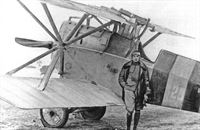 |
C.Owers - Hansa-Brandenburg Aircraft of WWI. Volume 3 - Monoplane Seaplanes /Centennial Perspective/ (19) |
| D.I 28.26 had an unusual gun mount; the curved rail enabled the pilot to lower the gun to clear jams in flight. |
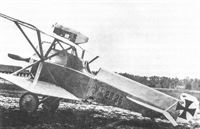 |
C.Owers - Hansa-Brandenburg Aircraft of WWI. Volume 1 - Landplanes /Centennial Perspective/ (17) |
| In plain finish, Phonix-built D.I 28.26 was at the Front from April 1917 as an escort fighter, interceptor and also for single-seat photographic missions. When flying a photographic mission by Hptm. Raoul Stosavljevic the aircraft was badly damaged in combat with five enemy aircraft and Stosavljevic, who had been badly wounded by phosphorus ammunition, had to force-land behind his own lines. The combat occurred on 11 January but the machine was not written off until 21 March. |
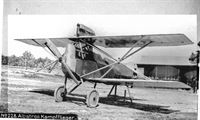 |
E.Hauke, W.Schroeder, B.Totschinger - Die Flugzeuge der k.u.k. Luftfahrtruppe und Seeflieger 1914-1918 |
| Brandenburg KD with the typical 'baby coffin' gun mount, 28.28, Flik 23 |
 |
J.Davilla - Italian Aviation in the First World War. Vol.1: Operations /Centennial Perspective/ (73) |
| Hptm. Raoul Stojsavljevic, CO of Flik 16, pioneered the use of single-seat aircraft for high-speed photo-reconnaissance in D.I 28.30.The machine-gun mounting is not the standard "baby coffin" to enable in-flight reloading. The camera was mounted below the fuselage in an angular housing not visible in this photograph. (Aeronaut) |
 |
C.Owers - Hansa-Brandenburg Aircraft of WWI. Volume 1 - Landplanes /Centennial Perspective/ (17) |
| Hauptmann Raoul Stojsavljevic of Flik 16/D, Seebach airfield on 14 August 1917 in his Brandenburg D.I(Ph) 28.30. Like the 28.24, it is fitted with a large windscreen, angled gun, and aiming sight on the front center-section strut, all Flik 16/D modifications. Phonix-built 28.30 showing more details of the camera pod below the cockpit. Problems with the synchronizer resulted in replacement with an over-wing gun. (Courtesy Koloman Mayrhofer) |
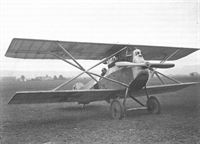 |
C.Owers - Hansa-Brandenburg Aircraft of WWI. Volume 1 - Landplanes /Centennial Perspective/ (17) |
| Phonix-built 28.30 was an armed, single-seat reconnaissance fighter; note the camera pod underneath the fuselage below the cockpit. Hptm. Raoul Stojsavljevic, CO of Flik 16, was the pilot of this pioneering Fotoeinsitzer. |
 |
C.Owers - Hansa-Brandenburg Aircraft of WWI. Volume 1 - Landplanes /Centennial Perspective/ (17) |
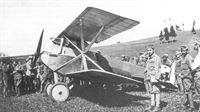 |
C.Owers - Hansa-Brandenburg Aircraft of WWI. Volume 1 - Landplanes /Centennial Perspective/ (17) |
| 28.37 was the personal mount of Stabsfeldwebel Josef Kiss, who was credited with three victories while flying this machine. Kiss made four claims in this D.I as listed below: 1. On 10 June 1917, a Nieuport near Asiago; there are no known Italian losses that correspond with this claim. 2. 14 June 1917, SAML serial 2187 of 113a Squadriglia, shot down near Roana.The crew of Sergente Filippo Rossi and Tenente Ugo Negro were taken POW. 3. 13 July 1917, S.P.3 of 26a Squadriglia brought down in Vai Sugana. The pilot, Sottotenente Vitale Piga, was made a POW, while the observer, Tenente Renato Semplicini, was killed. Kiss shared this victory with Fw. Viktor Zimmermann of Flik 44 flying Albatros D.III 53.33 and Fw. Karl Maurer/Oblt. Erich Kuhne of Flik 7 in Brandenburg C.I 29.68. 4. 14 September 1917, an aircraft near Asiago. There are no known Italian losses that conform to this action. On 14 September 1917, 28.37 made an emergency landing due to a lack of fuel and was damaged. It appears that it was not repaired but sent to Aspern and finally written off on 27 October. |
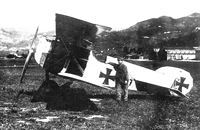 |
C.Owers - Hansa-Brandenburg Aircraft of WWI. Volume 3 - Monoplane Seaplanes /Centennial Perspective/ (19) |
 |
P.Grosz, G.Haddow, P.Shiemer - Austro-Hungarian Army Aircraft of World War One /Flying Machines/ |
| Feldwebel Josef Kiss of Flik 24 scored three victories in this Brandenburg D.I(Ph) 28.37 in the summer of 1917. It was one of the few D.I(Ph) fighters armed with a synchronized machine gun. Phonix-built Hansa-Brandenburg Dl of Fliegerkompanie 24 at Pergrine in summer 1917. |
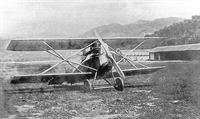 |
C.Owers - Hansa-Brandenburg Aircraft of WWI. Volume 3 - Monoplane Seaplanes /Centennial Perspective/ (19) |
| Brandenburg D.I 28.37, the personal machine of Feldpilot Stfw. Josef Kiss while with Flik 24. He was credited with three or four victories while flying this machine on his way to a final score of 19 confirmed victories. This aircraft had a gun with Bernatzik synchronizer mounted below the exhaust manifold; in the photo the gun barrel can just be seen protruding from the cowling beneath the manifold slightly above the level of the propeller hub. |
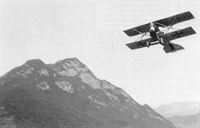 |
C.Owers - Hansa-Brandenburg Aircraft of WWI. Volume 3 - Monoplane Seaplanes /Centennial Perspective/ (19) |
| Views of Feldpilot Stfw. Josef Kiss flying Brandenburg D.I 28.37, his personal machine while with Flik 24. The absence of the over-wing gun canister due to the synchronized gun on this aircraft is notable. |
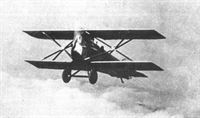 |
C.Owers - Hansa-Brandenburg Aircraft of WWI. Volume 1 - Landplanes /Centennial Perspective/ (17) |
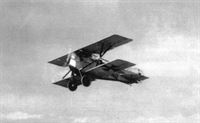 |
C.Owers - Hansa-Brandenburg Aircraft of WWI. Volume 3 - Monoplane Seaplanes /Centennial Perspective/ (19) |
| Views of Feldpilot Stfw. Josef Kiss flying Brandenburg D.I 28.37, his personal machine while with Flik 24. The absence of the over-wing gun canister due to the synchronized gun on this aircraft is notable. |
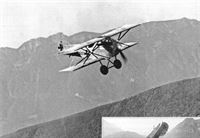 |
C.Owers - Hansa-Brandenburg Aircraft of WWI. Volume 3 - Monoplane Seaplanes /Centennial Perspective/ (19) |
| D.I 28.37, flown by Kiss, was one of the few D.I fighters with a synchronized gun, the reason why it did not have the typical 'baby coffin' gun canister on the upper wing. The gun was mounted under the exhaust manifold. |
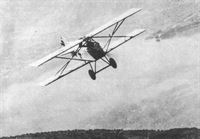 |
C.Owers - Hansa-Brandenburg Aircraft of WWI. Volume 1 - Landplanes /Centennial Perspective/ (17) |
| Joseph Kiss in 28.37 over the Vai Sugana, in the summer of 1917. D.I 28.37 was one of the few D.I aircraft with a machine gun fitted with the Bernatzik synchronizer, accounting for the lack of a 'baby coffin' over the wing; the installation was like that in 28.30. |
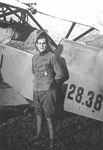 |
C.Owers - Hansa-Brandenburg Aircraft of WWI. Volume 1 - Landplanes /Centennial Perspective/ (17) |
| Oblt. Benno Fiala Ritter von Fernbrugg of Flik 12D poses with D.I serial 28.38 in the autumn of 1917. Delivered to Flik 12 in bad condition in June 1917 after three months service, 28.38 was refurbished and then went on to have five victories claimed by pilots of this machine. In November 1917 it was damaged and apparently ended up as a ground instruction airframe at Flek 6. |
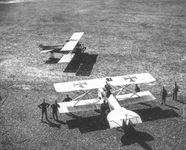 |
C.Owers - Hansa-Brandenburg Aircraft of WWI. Volume 1 - Landplanes /Centennial Perspective/ (17) |
| This photograph illustrates the light finish of the wings and how the varnished ply would reflect light. Both machines have the modified tailplane.The nearest machine is serial 28.39. |
 |
P.Grosz, G.Haddow, P.Shiemer - Austro-Hungarian Army Aircraft of World War One /Flying Machines/ |
| A number of experimental fixtures were tested for fighters, as in the Brandenburg D.I(Ph) 28.46 shown here. The movable fixture allowed access and possibly aiming by the pilot. The fighter was flown by Oberleutnant Johann Low, commander of Flik 101/G. |
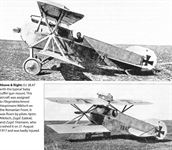 |
C.Owers - Hansa-Brandenburg Aircraft of WWI. Volume 3 - Monoplane Seaplanes /Centennial Perspective/ (19) |
| "Ханза-Бранденбург" серии 28. D.I 28.47 with the typical 'baby coffin' gun mount. This aircraft was assigned to Fliegerdetachment Hauptmann Nikitsch on the Romanian Front. It was flown by pilots Hptm. Nikitsch, Zugsf. Ezekiel, and Zugsf. Hramann, who crashed it on 21 August 1917 and was badly injured. |
 |
P.Grosz, G.Haddow, P.Shiemer - Austro-Hungarian Army Aircraft of World War One /Flying Machines/ |
| Starting with aircraft 28.51, the production D.I airframes were lightened. The ammunition belt chute leading to the angled gun can be seen between the wing struts. The manufacturer’s nameplates are attached to the bottom of the nose. Brandenburg D.I(Ph) 28.58 was attached to Flik 16/D in September 1917. |
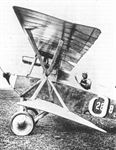 |
C.Owers - Hansa-Brandenburg Aircraft of WWI. Volume 1 - Landplanes /Centennial Perspective/ (17) |
| D.I 28.58 of Flik 16 sports a large shadow shaded "3" on the fuselage. The serial is painted white. This machine was with Flik 42J in July 1917 but was damaged, going to Flik 16 on being repaired. In September it was again damaged and sent to Flep 1 for repairs, ending its days as a trainer with Flek 5, being finally written off in September 1918. The length of service of some of the Brandenburg D.I aircraft is a tribute to their sturdy construction. |
 |
C.Owers - Hansa-Brandenburg Aircraft of WWI. Volume 3 - Monoplane Seaplanes /Centennial Perspective/ (19) |
| Another photo of D.I 28.58 in flight with different rudder and fin, apparently an interim step before the final configuration of fin and rudder seen on the facing page was installed. |
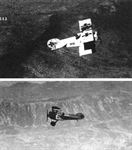 |
C.Owers - Hansa-Brandenburg Aircraft of WWI. Volume 3 - Monoplane Seaplanes /Centennial Perspective/ (19) |
| Two photos of D.I 28.58 in flight with different lighting conditions give a very different impression of the aircraft's color. |
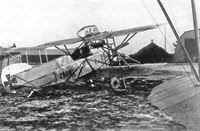 |
C.Owers - Hansa-Brandenburg Aircraft of WWI. Volume 3 - Monoplane Seaplanes /Centennial Perspective/ (19) |
| Brandenburg D.I 28.60. |
 |
P.Grosz, G.Haddow, P.Shiemer - Austro-Hungarian Army Aircraft of World War One /Flying Machines/ |
| Lineup of Flik 41/J during the visit of the Archduchess Maria Theresa on July 26, 1917 at Sesana; she is at the far left of the photo. This D.I with the Buddhist good luck emblem, the swastika, was with Flik 41J when this photograph was taken despite the original caption stating it was taken at Flik 12. Albatros (Oef) 53.27 is seen in the background. This D.l was flown at times by Godwin Brumowski and test flown by Gottfried Banfield. Serial number unknown. With few exceptions, an angled machine gun or a Type II VK gun canister comprised the armament on Brandenburg D.I fighters. Shown here are 28.65 and 28.64 (swastika insignia) of Flik 41/J in August 1917. The purpose of the flags extending from the canisters is not known, but could be an indication that the guns are armed. |
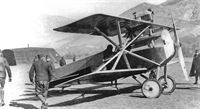 |
C.Owers - Hansa-Brandenburg Aircraft of WWI. Volume 3 - Monoplane Seaplanes /Centennial Perspective/ (19) |
| Unidentified Brandenburg D.I series 28 fighter. |
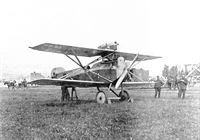 |
C.Owers - Hansa-Brandenburg Aircraft of WWI. Volume 3 - Monoplane Seaplanes /Centennial Perspective/ (19) |
| Unidentified series 28 Brandenburg D.I fighter at the front in standard configuration. |
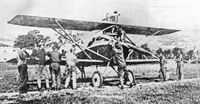 |
C.Owers - Hansa-Brandenburg Aircraft of WWI. Volume 3 - Monoplane Seaplanes /Centennial Perspective/ (19) |
| Unidentified series 28 Brandenburg D.I fighter at the front in standard configuration. |
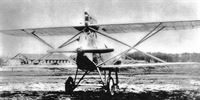 |
C.Owers - Hansa-Brandenburg Aircraft of WWI. Volume 3 - Monoplane Seaplanes /Centennial Perspective/ (19) |
| An unidentified D.I series 28 with standard armament. |
 |
C.Owers - Hansa-Brandenburg Aircraft of WWI. Volume 1 - Landplanes /Centennial Perspective/ (17) |
| Phonix-built D.I with the Albatros Company logo on the rudder. The ailerons split the upper wing crosses. |
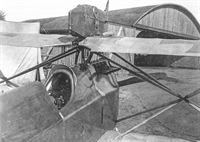 |
C.Owers - Hansa-Brandenburg Aircraft of WWI. Volume 1 - Landplanes /Centennial Perspective/ (17) |
| Close-up view showing the cockpit, installation of the machine gun "Baby Coffin" and radiator of a Series 28 machine serving with Flik 36. Note the upper wing crosses are painted on the plain varnished fabric without any outline. |
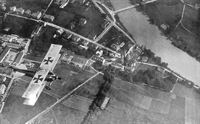 |
C.Owers - Hansa-Brandenburg Aircraft of WWI. Volume 3 - Monoplane Seaplanes /Centennial Perspective/ (19) |
| An unidentified D.I series 28 in flight. Lack of a gun canister indicates either a synchronized gun or, more likely, that it is being flown as a trainer. |
 |
C.Owers - Hansa-Brandenburg Aircraft of WWI. Volume 1 - Landplanes /Centennial Perspective/ (17) |
| Probably taken at a repair depot this photograph depicts three fuselages of the most important Austro-Hungarian types undergoing maintenance/repair work, the Oeffag Albatros D.III, Brandenburg D.I and C.I. All three machines feature wooden frameworks with ply covering giving a strong, robust structure. |
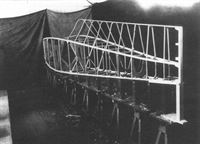 |
C.Owers - Hansa-Brandenburg Aircraft of WWI. Volume 1 - Landplanes /Centennial Perspective/ (17) |
| The sturdy fuselage structure of a Brandenburg D.I. |
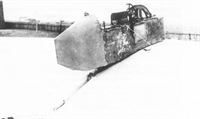 |
C.Owers - Hansa-Brandenburg Aircraft of WWI. Volume 1 - Landplanes /Centennial Perspective/ (17) |
| Detail of the "Baby Coffin" gun mount on a D.I. This mounting further aggravated the D.I fighter's already poor stability and sensitive controls. |
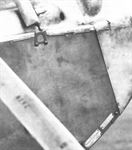 |
C.Owers - Hansa-Brandenburg Aircraft of WWI. Volume 1 - Landplanes /Centennial Perspective/ (17) |
| The manufacturer's plate (at rear) says "Albatros". The sheet metal gun blister shows where a machine gun with Bernatzik synchronizer was originally mounted. |
 |
C.Owers - Hansa-Brandenburg Aircraft of WWI. Volume 1 - Landplanes /Centennial Perspective/ (17) |
| Propeller decal on a Brandenburg D.I propeller. |
 |
C.Owers - Hansa-Brandenburg Aircraft of WWI. Volume 1 - Landplanes /Centennial Perspective/ (17) |
| Both sides of the 160-hp Austro-Daimler engine as used by the first series of Brandenburg-built D.I fighters, serials 65.50 - 65.69. |
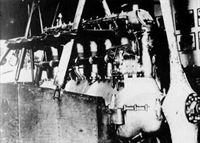 |
E.Hauke, W.Schroeder, B.Totschinger - Die Flugzeuge der k.u.k. Luftfahrtruppe und Seeflieger 1914-1918 |
| Austro-Daimler Ba 18.000. 185 PS. 6 zyl. Reihenmotor (Standmotor), wassergekühlt; die Abbildung zeigt den Einbau in Brandenburg KD 28.68. Rumpfteile im Technischen Museum. Prag Austro-Daimler Ba 18 000. 185 л.с. 6 цил. Рядный двигатель с водяным охлаждением; на снимке показана установка в Бранденбурге KD 28.68. Части мотора хранятся в Техническом музее. Прага |
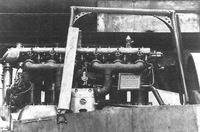 |
C.Owers - Hansa-Brandenburg Aircraft of WWI. Volume 1 - Landplanes /Centennial Perspective/ (17) |
| Close-up of the 185 hp Austro-Daimler engine and cabane strut construction of 28.68. |
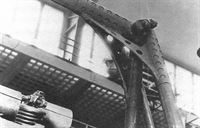 |
C.Owers - Hansa-Brandenburg Aircraft of WWI. Volume 1 - Landplanes /Centennial Perspective/ (17) |
| Brandenburg D.I 28.68 Construction Details: Detail of cabane strut construction. |
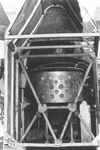 |
C.Owers - Hansa-Brandenburg Aircraft of WWI. Volume 1 - Landplanes /Centennial Perspective/ (17) |
| Brandenburg D.I 28.68 Construction Details: Upholstered pilot's seat seen from behind. |
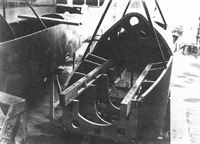 |
C.Owers - Hansa-Brandenburg Aircraft of WWI. Volume 1 - Landplanes /Centennial Perspective/ (17) |
| Brandenburg D.I 28.68 Construction Details: Engine bearer and forward fuselage structure. |
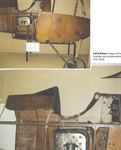 |
C.Owers - Hansa-Brandenburg Aircraft of WWI. Volume 1 - Landplanes /Centennial Perspective/ (17) |
| Images of the fuselage and cockpit details of D.I 28.68. This aircraft is not whole and has been modified either before it was acquired for preservation or to make it a presentable museum exhibit. The side panels are not all original and display repairs. The cut-outs for access to the lower wing attachments are not present, indicating that this panel is a replacement panel. The top decking in front of the pilot is from a Phonix D.I fighter as are the instrument panel and instruments. Given the relationship of the Phonix fighters to the Brandenburg D.I it is easy to understand how this is possible. The compass is not installed correctly and should be moved further into the cockpit area. A small circular hole was let into the decking to allow natural light to illuminate the compass dial. |
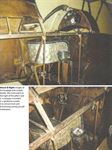 |
C.Owers - Hansa-Brandenburg Aircraft of WWI. Volume 1 - Landplanes /Centennial Perspective/ (17) |
| Images of the fuselage and cockpit details. The instrument to the right of the pilot's seat is a compass mounted in a gimbal to enable it to remain level and functioning during aircraft maneuvers. |
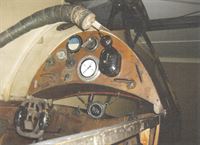 |
C.Owers - Hansa-Brandenburg Aircraft of WWI. Volume 1 - Landplanes /Centennial Perspective/ (17) |
| Details of the cockpit of Phonix-built Brandenburg D.I 28.68 as displayed at the National Technical Museum in Prague. |
 |
C.Owers - Hansa-Brandenburg Aircraft of WWI. Volume 1 - Landplanes /Centennial Perspective/ (17) |
 |
C.Owers - Hansa-Brandenburg Aircraft of WWI. Volume 1 - Landplanes /Centennial Perspective/ (17) |
| More cockpit details of 28.68, including the rudder pedals below right. |
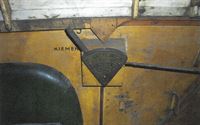 |
C.Owers - Hansa-Brandenburg Aircraft of WWI. Volume 3 - Monoplane Seaplanes /Centennial Perspective/ (19) |
| The throttle of D.I 28.68. Photo is of the example in the National Technical Museum in Prague. |
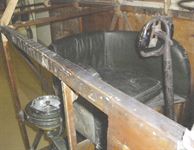 |
C.Owers - Hansa-Brandenburg Aircraft of WWI. Volume 1 - Landplanes /Centennial Perspective/ (17) |
| The pilot's seat, control stick, and compass in Brandenburg D.I 28.68.The sturdy wood frame did not require inner wire bracing. |
 |
C.Owers - Hansa-Brandenburg Aircraft of WWI. Volume 3 - Monoplane Seaplanes /Centennial Perspective/ (19) |
| The pilot's seat of D.I 28.68. Photo is of the example in the National Technical Museum in Prague. |
 |
C.Owers - Hansa-Brandenburg Aircraft of WWI. Volume 3 - Monoplane Seaplanes /Centennial Perspective/ (19) |
| The camouflaged section of Phonix-built Brandenburg D.I 28.68 is one of the few remaining artefacts wearing original Austro-Hungarian camouflage. |
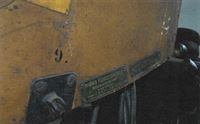 |
C.Owers - Hansa-Brandenburg Aircraft of WWI. Volume 3 - Monoplane Seaplanes /Centennial Perspective/ (19) |
| Phonix data plates on Phonix-built Brandenburg D.I 28.68. |
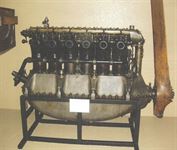 |
C.Owers - Hansa-Brandenburg Aircraft of WWI. Volume 1 - Landplanes /Centennial Perspective/ (17) |
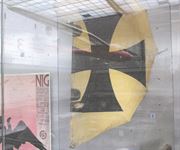 |
C.Owers - Hansa-Brandenburg Aircraft of WWI. Volume 1 - Landplanes /Centennial Perspective/ (17) |
| Rudder of Phonix-built Brandenburg D.I 28.68 as displayed at the National Technical Museum in Prague. |
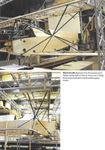 |
C.Owers - Hansa-Brandenburg Aircraft of WWI. Volume 3 - Monoplane Seaplanes /Centennial Perspective/ (19) |
| Reproduction Brandenburg D.I fighter being built in Vienna, Austria by Craftlab Restaurations, Modell und Ausstellungsbau Gmbh. |
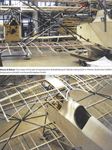 |
C.Owers - Hansa-Brandenburg Aircraft of WWI. Volume 3 - Monoplane Seaplanes /Centennial Perspective/ (19) |
| Two views of the pair of reproduction Brandenburg D.I fighters being built in Vienna, Austria by Craftlab Restaurations,Model! und Ausstellungsbau Gmbh. |
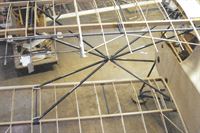 |
C.Owers - Hansa-Brandenburg Aircraft of WWI. Volume 3 - Monoplane Seaplanes /Centennial Perspective/ (19) |
| Reproduction Brandenburg D.I fighters being built in Vienna, Austria by Craftlab Restaurations, Modell und Ausstellungsbau Gmbh. |
 |
P.Grosz, G.Haddow, P.Shiemer - Austro-Hungarian Army Aircraft of World War One /Flying Machines/ |
| Cockpit of Brandenburg D.I 65.87 showing the large tachometer and fuel gauge (top), the control stick, manometer, and selector switches. The throttle quadrant is on the left, whereas most Austro-Hungarian aircraft had the throttle on the right. |
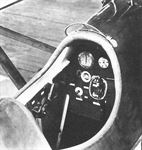 |
C.Owers - Hansa-Brandenburg Aircraft of WWI. Volume 1 - Landplanes /Centennial Perspective/ (17) |
| The cockpit of Brandenburg D.I 65.87. |
 |
C.Owers - Hansa-Brandenburg Aircraft of WWI. Volume 1 - Landplanes /Centennial Perspective/ (17) |
| The instrument panel in a Brandenburg D.I. |
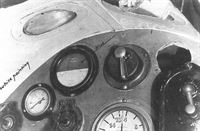 |
C.Owers - Hansa-Brandenburg Aircraft of WWI. Volume 1 - Landplanes /Centennial Perspective/ (17) |
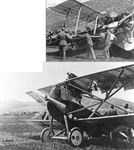 |
C.Owers - Hansa-Brandenburg Aircraft of WWI. Volume 3 - Monoplane Seaplanes /Centennial Perspective/ (19) |
| Collision of Brandenburg D.I 65.50 of Flik 4 with a Brandenburg series 29.5x at Wippach airfield. |
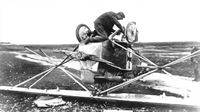 |
C.Owers - Hansa-Brandenburg Aircraft of WWI. Volume 3 - Monoplane Seaplanes /Centennial Perspective/ (19) |
| The commander of the LFT, Oberst Uzelac, had a penchant for flying new aircraft. On 7 November 1916, piloting the Brandenburg D.I 65.54 at Flik 19, he learned the hard way how tricky and dangerous the flight characteristics really were. |
 |
C.Owers - Hansa-Brandenburg Aircraft of WWI. Volume 3 - Monoplane Seaplanes /Centennial Perspective/ (19) |
| D.I 65.78 suffered engine failure during a test flight on Jan. 31, 1917 with Flik 34. The pilot, Oblt. Gustav Rubritius, was slightly injured. Armament had not yet been installed. It was written off on March 15, 1917. |
 |
C.Owers - Hansa-Brandenburg Aircraft of WWI. Volume 3 - Monoplane Seaplanes /Centennial Perspective/ (19) |
| Unarmed D.I 65.89 served as a fighter trainer with Flek 6 and survived until at least Aug. 31, 1918. |
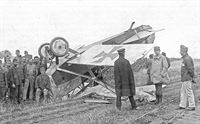 |
C.Owers - Hansa-Brandenburg Aircraft of WWI. Volume 3 - Monoplane Seaplanes /Centennial Perspective/ (19) |
| The end of D.I 65.94 came in September 1917 as the result of a landing accident. An all-too-common sight, this Brandenburg D.I 65.94 is interesting as it is one of the few fitted with the large rounded rudder and tail fin. The crash resistance of the robust pyramid structure is noteworthy. |
 |
C.Owers - Hansa-Brandenburg Aircraft of WWI. Volume 1 - Landplanes /Centennial Perspective/ (17) |
| Feldwebel Karl Kaszala wrote off yin-yang decorated D.I 28.11 of Flik 41J in July 1917. |
 |
C.Owers - Hansa-Brandenburg Aircraft of WWI. Volume 1 - Landplanes /Centennial Perspective/ (17) |
| Recovering 28.11 of Flik 41J after a hard landing. This machine was assigned to Flik 41J on 24 February 1917 and was at the Front until around the middle of May 1917. Written off on 12 July after "flight error," possibly the accident seen here. |
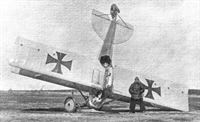 |
C.Owers - Hansa-Brandenburg Aircraft of WWI. Volume 3 - Monoplane Seaplanes /Centennial Perspective/ (19) |
| D.I 28.13 performs a head stand and the chagrined pilot is photographed with the evidence. |
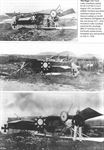 |
C.Owers - Hansa-Brandenburg Aircraft of WWI. Volume 1 - Landplanes /Centennial Perspective/ (17) |
| Oblt. Frank Linke-Crawford crashed D.I 28.15 of Flik 41J on 4 August 1917, on Sesana airfield. The black and white marking is typical of the devices marked on the KD and Albatros D.III fighters of the unit during 1917-1918. At bottom Linke-Crawford stands by the wreckage. With 27 victories, he was the fourth-ranked Austro-Hungarian ace, and was KIA on July 31, 1918. |
 |
C.Owers - Hansa-Brandenburg Aircraft of WWI. Volume 1 - Landplanes /Centennial Perspective/ (17) |
| Another Flik 41J D.I, serial 28.33, after "landing". Flown by a number of different pilots, two victories were claimed while flying this machine. |
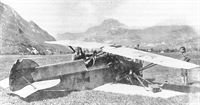 |
C.Owers - Hansa-Brandenburg Aircraft of WWI. Volume 1 - Landplanes /Centennial Perspective/ (17) |
| D.I 28.37 after a landing gear failure. This was the personal machine of Feldpilot Stfw. Josef Kiss while with Flik 24. He was credited with three or four victories while flying this machine, which was fitted with a gun using a Bernatzik synchronizer like that originally fitted to 28.30. |
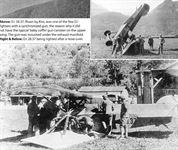 |
C.Owers - Hansa-Brandenburg Aircraft of WWI. Volume 3 - Monoplane Seaplanes /Centennial Perspective/ (19) |
| D.I 28.37 being righted after a nose-over. |
 |
C.Owers - Hansa-Brandenburg Aircraft of WWI. Volume 1 - Landplanes /Centennial Perspective/ (17) |
| The remains of Korp. Altmann Hertzog's D.I (28.44?) after his fatal crash attributed to sabotage. The personal insignia was a black hand on a white diamond. Note the white outline to the underwing crosses. |
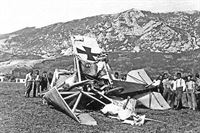 |
C.Owers - Hansa-Brandenburg Aircraft of WWI. Volume 3 - Monoplane Seaplanes /Centennial Perspective/ (19) |
| The crash of D.I 28.51 of Flik 32 on the St.Viet airfield while being flown by Korporal Aladar Balasz. |
 |
C.Owers - Hansa-Brandenburg Aircraft of WWI. Volume 3 - Monoplane Seaplanes /Centennial Perspective/ (19) |
| The crash of D.I 28.65. |
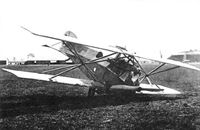 |
C.Owers - Hansa-Brandenburg Aircraft of WWI. Volume 3 - Monoplane Seaplanes /Centennial Perspective/ (19) |
| Probably another view of the crash of D.I 28.65. |
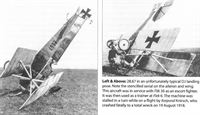 |
C.Owers - Hansa-Brandenburg Aircraft of WWI. Volume 1 - Landplanes /Centennial Perspective/ (17) |
| 28.67 in an unfortunately typical D.I landing pose. Note the stencilled serial on the aileron and wing. This aircraft was in service with Flik 36 as an escort fighter. It was then used as a trainer at Flek 6. The machine was stalled in a turn while on a flight by Korporal Knirsch, who crashed fatally to a total wreck on 19 August 1918. |
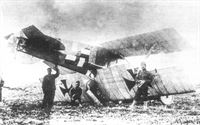 |
C.Owers - Hansa-Brandenburg Aircraft of WWI. Volume 1 - Landplanes /Centennial Perspective/ (17) |
| Possibly the same aircraft in a typical pose for the D.I - on its back! |
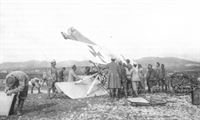 |
C.Owers - Hansa-Brandenburg Aircraft of WWI. Volume 1 - Landplanes /Centennial Perspective/ (17) |
| This D.I lost its tailplane when it crashed. It is unusual in that the underwing crosses are marked on white panels rather than being painted directly on the clear doped fabric. |
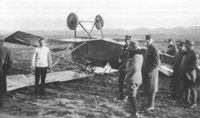 |
C.Owers - Hansa-Brandenburg Aircraft of WWI. Volume 1 - Landplanes /Centennial Perspective/ (17) |
| Oblt. August Salinger with his crashed D.I. |
 |
C.Owers - Hansa-Brandenburg Aircraft of WWI. Volume 1 - Landplanes /Centennial Perspective/ (17) |
 |
C.Owers - Hansa-Brandenburg Aircraft of WWI. Volume 1 - Landplanes /Centennial Perspective/ (17) |
| Brandenburg factory drawing of the star-strut design of the KD 65.5 series. This technology was applied to other Brandenburg aircraft such as the Type K, but was superseded by more conventional wing cellule designs. |
 |
C.Owers - Hansa-Brandenburg Aircraft of WWI. Volume 1 - Landplanes /Centennial Perspective/ (17) |
| Brandenburg D.I Fuselage Construction Details. Traced from original Brandenburg plans by Colin A Owers. |
 |
C.Owers - Hansa-Brandenburg Aircraft of WWI. Volume 1 - Landplanes /Centennial Perspective/ (17) |
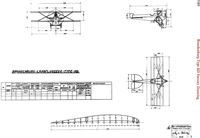 |
C.Owers - Hansa-Brandenburg Aircraft of WWI. Volume 1 - Landplanes /Centennial Perspective/ (17) |
| Brandenburg Type KD Factory Drawing |
 |
W.Green, G.Swanborough - The Complete Book of Fighters |
| The KD "star strutter" in its 160 hp Austro-Daimler-engined DI production form. |
 |
P.Grosz, G.Haddow, P.Shiemer - Austro-Hungarian Army Aircraft of World War One /Flying Machines/ |
| Brandenburg D.I Series 65.7 |
 |
P.Grosz, G.Haddow, P.Shiemer - Austro-Hungarian Army Aircraft of World War One /Flying Machines/ |
| Brandenburg D.I(Ph) Series 28 |
 |
В.Кондратьев - Самолеты первой мировой войны |
| Hansa-Brandenburg D-I |
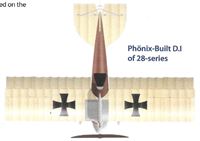 |
C.Owers - Hansa-Brandenburg Aircraft of WWI. Volume 1 - Landplanes /Centennial Perspective/ (17) |
| Phonix-built D.I of 28-series |